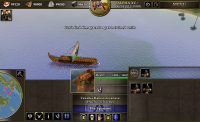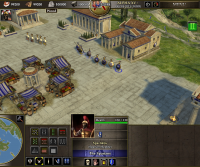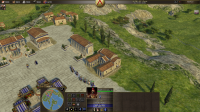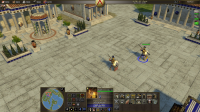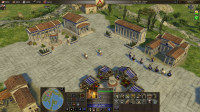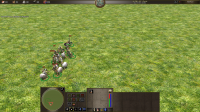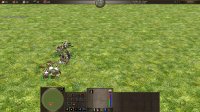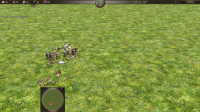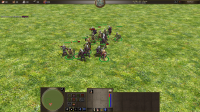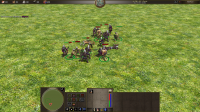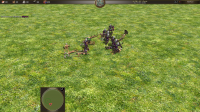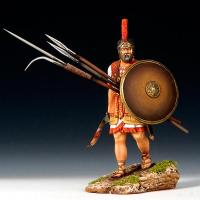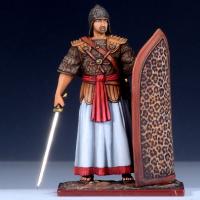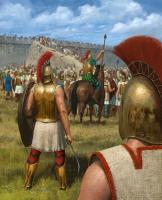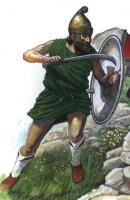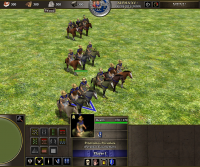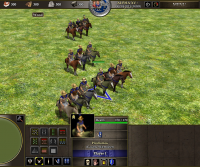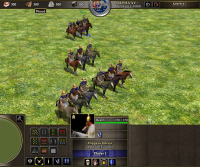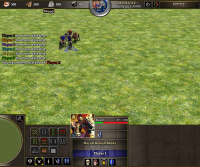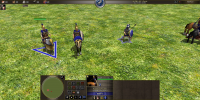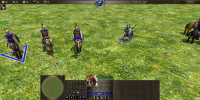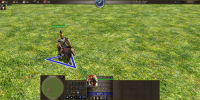-
Posts
320 -
Joined
-
Last visited
-
Days Won
3
Everything posted by Mega Mania
-
Minor changes in unit roster, Kamandar-e Zhayedan become Kamadar-e Sahwar or Royal Archer, with new Heroes: Rostam Farrokhzad and Hormezdan.
-
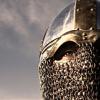
Parthians (or Arsacids) and Sasanians
Mega Mania replied to Mega Mania's topic in General Discussion
Further changes in Sassanid Royal Archer/Kamandar-e Zhayedan, Kamandar-e Zhayedan becomes Kamandar-e Sahwar. -

Persian provincial levy and mercenary options
Mega Mania replied to Mega Mania's topic in General Discussion
Oops, sorry.- 17 replies
-
I've found this really strange, do the Persians need this tech? I mean this is a historical RTS, not Supreme Commander or Planetary Annihilation! Yes it sounds wonderful where you can train cavalry from warship but that sounds ridiculous for a sound man. Here's some photo: Hopefully the team understand why i found it ridiculous.
-

Persian provincial levy and mercenary options
Mega Mania replied to Mega Mania's topic in General Discussion
Now lads, lets us return to the topic. My suggestion comprise of several techs and policy decision. It began with xsaça-pā-van tech available when player achieve tier II civil centre, after gaining Xsaca-pa-van tech player now receives a certain number of provincial levy from Carians, Phoenician, Egyptians from Phoenician Trireme and Kushite warrior from barracks plus Achaemenid satrapy court as the only facility to train advanced units like Saka Haomavarga riders, Hoplite mercenaries, Kardakes and Indian Elephant but requires certain technology or policy decision to unlock it. As player make such decision, player may suffer certain penalties such as logistic penalty and/or recruitment penalty.- 17 replies
-
- 1
-

-
No, not Japan but only in Okinawa. An article of ancestor worship: Ancestor worship occurs in ancient cultures all over the world, and even in modern times it plays an important role in primitive religions. It is founded on the belief that the dead live on and are able to influence the lives of later generations. These ancestors can assert their powers by blessing or cursing, and their worship is inspired by both respect and fear. The ancestor cult consists of praying, presenting gifts, and making offerings. In some cultures, people try to get their ancestors' advice through oracles before making important decisions. In ancient China and Egypt, the influence of ancestors was very great. They were buried in expensive graves and in Egypt a permanent death cult was instituted. It was generally believed that the lack of veneration would cause the deceased to die a second death, which was for many people an almost unbearable thought. In nearly every primitive tribal religions of Africa ancestor worship is common practice. The ancestors of the tribe are honored as spirits who preserve the moral standards of tribal life. They are also regarded as the intermediaries between the living and the divine powers. And the ancestor spirits play an important role in the initiation rites. Among some west-African peoples the belief is current that the ancestors reincarnate in their descendants. In Japan, ancestors were worshiped until 1945. At that time, the Japanese Emperor disclaimed any form of divine ancestry and polytheistic ancestor worship was no longer permitted.
-

Persian provincial levy and mercenary options
Mega Mania replied to Mega Mania's topic in General Discussion
Good idea, but is it available for battle map, campaign or map editor only?- 17 replies
-

Persian provincial levy and mercenary options
Mega Mania replied to Mega Mania's topic in General Discussion
Agree.- 17 replies
-

Parthians (or Arsacids) and Sasanians
Mega Mania replied to Mega Mania's topic in General Discussion
Changes in Parthian units: Parthian spearman - Nizagan-e Pahlavig Parthian horse archer - Kamandar-e Pahlavig Parthian Heavy Infantry/ Swordsman - Samsirdaran-e Yunanig Siege weapon Battering Ram Navy Characenian Dhow Changes in Sassanid units: Nizagan-e Eransahr (replace Payg (infantry)) Kamadar-e Asp (mounted archer) Aswaran-e Sakasahr (become Champion light cavalry) Further changes in Parthian and Sassanid units: Parthian Clibanarii/Grivpanvar now merged together with Aswaran-e Azadan and Sassanid Grivpanvar now merged with Aswaran-e Eransahr. Meanwhile Sassanid receive Omani Marine. -
I found something interesting from TWC forum for all Germanic fans and Imperial Roman fans, its a documentary movie: http://www.youtube.com/watch?v=nQUYwju-AQg Enjoy.
-
The problem is that the Greeks (Athenians and Spartans) have Prodromos, why is it Thessalian scout served in the Greek city states before the rise of Macedonia?
-

Spartan Hoplites are not the best infantry unit!
Mega Mania replied to thamlett's topic in General Discussion
Have you ever try purchasing Agoge tech? If you do, they are the best hoplite in the game. Now here's some picture: Plus with some martial skill, weapon and armor research and you'll get the best Elite hoplite in the game. Oh, here's more picture but this time it is the citizen hoplite not the full blooded SPARTANS! -

Parthians (or Arsacids) and Sasanians
Mega Mania replied to Mega Mania's topic in General Discussion
Here's an article about cataphracts and clibanarii: The Differences between Cataphracts and Clibanarii.pdf -
I've tested the Gallic Gaesata against the Persian Anusiya and the Carthaginian Sacred Band Infantry and the results was quite shocking, The Carthaginian have sustained 3 deaths while the Persians sustained 2 deaths after engaging Gallic Gaesatae in a battle. These are the photos: Gauls vs Carthaginians 1. Before battle 2. The battle begins 3. The battle rages 4. The battle ended Gauls vs Persians 1. Before battle 2. The battle begins 3. The battle rages 4. The battle ended
-

Persian provincial levy and mercenary options
Mega Mania replied to Mega Mania's topic in General Discussion
Did you consider the background of Persian Empire? The list that i proposed was the modest among the real Persian Empire could assemble! Of course we could use policy decision to hinder Persian player from being too powerful by disabling certain unit from recruitment list plus heavier logistic burden. But after all, i 'm not the one that make decision here.- 17 replies
-

Parthians (or Arsacids) and Sasanians
Mega Mania replied to Mega Mania's topic in General Discussion
Also with the banners: By the way, thank you. -
As a 0 AD fans, i am asking the team is it possible to give Persian players an alternative option to raise provincial levy and foreign mercenaries? My Persian provincial levy and mercenary list: Anatolia and Lydia: Hoplite mercenary Carian assault infantry Egypt: Egyptian Marine Kushite Clubman Levant: Phoenician Marine Saka Haomavarga: Saka Haomavarga horse archers Advantage: Provide player more options instead of traditional Persian levies. Capable of raising an army faster than raising a traditional Persian levies. Disadvantage Expensive, especially on logistics. Here's some pictures
- 17 replies
-
DEYLAMITES, people inhabiting a shifting region in northern Persia and adjacent territories, including the Deylamān uplands. i. IN THE PRE-ISLAMIC PERIOD In antiquity the Deylamites (Gk. Dolomîtai and variants) were mountain tribes, usually identified by 10th-century Arab geographers with the inhabitants of Deylam, the highlands of Gīlān. A considerably broader distribution extending as far as southern Armenia and the Caucasus can be deduced, however (Minorsky, p. 193). The earliest mention of the Deylamites occurs in Polybius’ universal history, of the late 2nd century B.C.E. (5.44.9), in which, in the description of Media, Greek *Delymaîoi is to be read in place of geographically impossible Elymaîoi (i.e., Susiana), as the tribes named immediate after them (Anariákai, Kadoúsioi, Matíanoi) were all in the north. It is also possible that the “Elymaioi” mentioned by Plutarch (Pompey 36.2; 1st century B.C.E.) with the Medes were actually Deylamites. In the later 2nd century C.E. Ptolemy (6.2) listed *Delymaís as a place in northern Choromithrene, which was located southeast of Ray and west of the Tapuroi (i.e., Ṭabarestān). There, too, the toponym was corrupted to Elymaís (Markwart, Ērānšahr, p. 126 n. 1). In the Pahlavi Kār-nāmag (tr., p. 47) it is recorded that in the final years of the crumbling Parthian empire Artabanus V (or IV) mobilized all the troops from Ray,Damāvand, Deylamān, and Patešḵᵛārgar, evidence that the region south of theAlborz was inhabited by Deylamites. More precisely in the Nāma-ye Tansar (tr., p. 30) it is stated that Deylamān, Gīlān, and Rūyān (later part of Ṭabarestān) all belonged to the kingdom of Gošnasp of Ṭabarestān and Parešvār, the latter apparently the Alborz region. Gošnasp made his submission to Ardašīr I (224-70) only after thorough consideration and kept his realm by the guarantee of Ardašīr himself. The dynasty was still ruling there in the time of Pērōz I (459-84; cf. Masʿūdī, Tanbīh, p. 99-100). Kavād I (488-531) appointed his eldest son, Qābūs (Kāōs), king of Ṭabarestān (Nāma-ye Tansar, tr., p. 70; Ebn Esfandīār, tr. Browne, pp. 92-94). Toward the end of his reign (while the Roman emperor Justin I [d. 527] was still alive), Kavād dispatched Būya (Gk. Bóēs), “bearing the title wahriz” (Gk.ouarízēs), against King Gurgēn of Iberia (Procopius, De Bello Persico 1.12.10). That Būya had come from Deylam can be deduced from a tradition according to which the wahriz (i.e., Ḵorrazāḏ b. Narsē b. Jāmāsp) who conquered Yemen during the reign of Ḵosrow I (531-79), in about 570, had formerly been governor of Deylam (Masʿūdī, Tanbīh, p. 260; Ḥamza, p. 138). The troops of the wahriz also included Deylamites (Nöldeke, Geschichte der Perser, p. 167). Procopius (De Bello Gothico4.14.5-7, 4.14.9) reported, from a western point of view, on the Dolomîtai at the siege of Archeopolis in the disputed territory of Lazica during the reign of Ḵosrow I (about 552): They were independent allies of the Persians, living in inaccessible mountains in the heart of Persia (i.e., Media) and fighting as infantrymen, each armed with sword, shield, and three javelins and accustomed to warfare on mountainous terrain. Some time later, according to Agathias (3.17.6-9, 3.17.18-22), the Dilimnîtai, “the largest tribe of those dwelling on this side of the river Tigris in the region of Persis” (i.e., in central Persia, or Media), undertook a fruitless attack against the Hunnic Sabirs, who were in the service of the Romans, and vainly charged the fortress of Phasis in Colchis. Agathias characterized them as very warlike and independent allies of the Persians, skillful warriors in close combat or at a distance, using sword, pike, and sling. In a fragment from Theophanes (preserved in Photius, Bibliotheca 64) it is related that in the battles between Persians and Romans during the reign of Justin II (565-78), which broke out in 572, the Deylamites (Gk. tò Dilmainòn éthnos) joined forces with the Persians and the Sabirs. When power passed from Ohrmazd IV (579-90), to whom the Deylamites had submitted, to Ḵosrow II in 590 a certain Zoarab, leader of the Deylamites, rose up against the latter and joined the party of Bahrām VI Čōbīn (590-91; Theophylact Simocatta, 4.4.17, 4.3.1). When Bahrām Čōbīn’s rising failed the Deylamites joined the rebellion of Besṭām (see BESṬAMÚ O BENDOY), a maternal uncle of Ḵosrow II (probably 592-95; cf. Nöldeke, Geschichte der Perser, p. 486). After the fall of Besṭām the šahr-wahriz (i.e., governor of Deylam) fought against the remnants of his army, consisting of Deylamites and Armenians, in alliance with Smbat Bagratuni, marzbān (margrave) of Gorgān (Sebeos, tr., pp. 43-46). Incidentally it was reported (Balāḏorī, Fotūhá, p. 282) that Ḵosrow II had a personal guard of 4,000 Deylamites. When the Arabs conquered Persia the Deylamites remained virtually unsubdued, ruled by their own dynasty until the 9th century (cf. Minorsky, p. 190; Markwart, Ērānšahr, p. 127; see ii, below). Christianity entered Deylam fairly early; in 554 there was a diocese of Āmol and Gīlān (Chabot, pp. 109, 366). The religion obviously survived for a long time in these iunaccessible regions: The Nestorian patriarch Timothy I (780-823) elevated both Gīlān and Deylam to the status of metropolis (Thomas of Marga, I, pp. 252-53; II, pp. 467-68), though evidence from a letter of the patriarch suggests this separate status was limited to the years 795-98 (cf. Braun). These arrangements were, in fact, not stable; in about 893 Elias, metropolitan of Damascus, mentioned only Media (=Ray) as a metropolis, and the lists compiled by Ebn aḷ-Ṭayyeb (d. 1043) and ʿAbdīšōʿ, metropolitan of Nisibis (d. 1318), are silent about them (Sachau, pp. 21 ff.). The metropolis of Deylam does, however, reappear in the lists given by the early 14th-century historians of the Nestorian patriarchs, ʿAmr b. Maṭṭā and slightly earlier Salibhā b. Yūḥannā (Maris Amri et Slibae, pp. 126, 132). It seems that remnants of Christianity must have survived up to that time. ii. IN THE ISLAMIC PERIOD In the early Islamic centuries the Deylamites lived in the Alborz mountains and along the shore of the Caspian north of Qazvīn, between Gīlān in the west and Ṭabarestān (Māzandarān) in the east. Whatever their actual origins, at that time they and their Gilite neighbors were commonly considered closely related and frequently mentioned together. It was claimed that the two peoples were descended from two brothers, Deylam and Gīl, of the Arab tribe Banū Ḍabba; this legend of the Arab origins of the Deylamites seems to have been known already at the time of the early expansion of Islam (see Ṭabarī, I, pp. 1992, 2352; III, p. 2367). Deylamites were certainly known among Arabs from the time of the Persian conquest of Yemen in about 570, and during the early days of Islam the Deylamites Fīrūz and Gošnasp (Jošnas) played a leading role among the Persian Abnāʾ, backing the new religion in Yemen. Fīrūz Deylamī’s family emigrated to Palestine and Syria, where several of his descendants became well-known Muslim traditionists. Dey-lamites may also have participated in raids in northern Arabia. Abū Dolaf b. Mohalhel (sec. 25; Yāqūt, Boldān, s.v. Deylamestān) mentioned a place called Deylamestān, located 7 farsangs from Šahrazūr, where in pre-Islamic times Deylamites used to camp while they carried out their raids into the lowlands of Mesopotamia. Whatever the original language of the Deylamites may have been, in the Islamic period they spoke a northwestern Iranian dialect very similar to the language of the Gilites. Apart from other characteristics of northwestern Iranian, the guttural pronunciation of h as ḵ, noted as Gilite by Maqdesī (Moqaddasī, p. 368; e.g., both Ḵošam and Hawsam, Ḵašūya and Hašūya), and an ī sound added between consonants and ā (Lāhījān=Līāhījān, Došmanzār=Došmanzīār, Amīrkā=Amīrkīā, presumably pronounced Lyāhījān, Došmanzyār, and Amīrkyā respectively) were probably characteristic of Deylamite, as well as of Gilite. The question whether or not the report by Eṣṭaḵrī (p. 205) about a tribe in the Deylamite highlands that spoke a language different from Deylamite and Gilite and a similar report by Abū Esḥāq Ṣābī about a tribe in the region of Rašt (Madelung, 1987, pp. 14-15) attest the survival of a non-Iranian language among them must be left open. In the first Islamic centuries. During the early centuries of Islam the Deylamites successfully resisted frequent Arab efforts to conquer their land. Some Deylamite mercenaries seem, however, to have joined the Arabs even before the battle of Qādesīya (16/637) and afterward accepted Islam (Ṭabarī, I, pp. 2340-41). Sayf b. ʿOmar reported a battle at Vājrūḏ in the year 18/639 in which the Arabs under Noʿaym b. Moqarren defeated the Deylamites and killed their leader Mūtā (Ṭabarī, I, pp. 2650-53). Qazvīn surrendered to Barāʾ b. ʿĀzeb, governor of Ray, in 24/645 and continued to function as a fortified border town against the Deylamites, as it had in the Sasanian period. Its garrison converted to Islam, and a group settled in Kūfa, where it was known as the Ḥamrāʾ of Deylam, presumably because its members were largely of Deylamite extraction. In Hadiths ascribed to the Prophet Moḥammad Qazvīn was praised as a border fortress, its martyrs equal in merit to the martyrs of the battle of Badr (Ebn al-Faqīh, p. 283). The Deylamites were commonly described, together with the Turks, as the most barbarous and odious enemies of the Muslims (Ṭabarī, II, pp. 285, 320, 722, 748, 1391), against whom religious war (jehād) was most meritorious.
-

Parthians (or Arsacids) and Sasanians
Mega Mania replied to Mega Mania's topic in General Discussion
Article about Parthian army and maritime influence: Hauser_2006_Was_There_No_Paid_Standing_Army.pdf L._Gregoratti__A_Parthian_Port_on_the_Persian_Gulf__Characene_and_its_Trade.pdf -
I find it very interesting, since when did the Athenian and Spartan receive Pródromos while the Macedonian receive Hippakontistès Odrysón? Here's some picture: Plus an article about Thessalian cavalry and Alexander's army composition Strootman_2012_Thessalian_Cavalry.pdf
-
Here's some articles that i found and hopefully it may help Alexander's Army and District Division of Late Argead Macedonia.pdf Macedonian warfare.pdf The Persian Policies of Alexander the Great.pdf RECENT RESEARCH ON ANCIENT MACEDONIA.pdf CONTESTING THE GREATNESS OF ALEXANDER THE GREAT.pdf
-
I've found this a bit interesting, an Italic Cavalry have 40 HP when they achieve advanced status and 10 more HP than any other lancer when they reach elite status, i wonder whats going on?
-
An interesting question and answer from TWC Forum: http://www.twcenter.net/forums/showthread.php?455574-Historiae-about-Sasanians-and-Dehkans
-

Parthians (or Arsacids) and Sasanians
Mega Mania replied to Mega Mania's topic in General Discussion
Sassanid Infantry from IB: Ruina Romae Sassanid medium cavalry Pre-Islamic Arab Noble Cavalry


